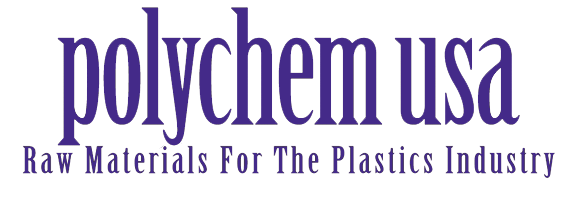
Proposal to Ban Fluoropolymers Has European Industry on Edge

PFAS is a well-known chemical that is primarily used to increase resistance to water, stains, and temperature. It also has the lowest coefficient of friction, which means that it has self-lubricating features. Despite its numerous advantages, it does not appear to be environmentally friendly and has been linked to health problems in humans. There are more than 12,000 PFAS compounds, and a few of them are already banned in some areas. Scientific evidence to support health concerns associated with each PFAS is still lacking, however, and testing could take years.
PFAS substitutes are problematic in many cases
The recent announcement by five developed economies — Denmark, Germany, the Netherlands, Norway, and Sweden — to restrict or even ban the use of PFAS will have a broad impact on the supply and production of these chemicals. Because of their unique properties and use in a variety of applications, it may not be possible to identify a suitable substitute for PFAS compounds in many cases. The decision on whether to completely outlaw PFAS or just regulate it is still up for debate. There will be more clarity in the next review conducted by REACH (Registration, Evaluation, Authorization, and Restriction of Chemicals Regulation) and the European Chemicals Agency (ECHA), which is scheduled for September 2023. The overall restriction phase would have four stages: Preparation and submission of a restriction proposal; consultations; opinion development; decision and follow-up. Member states can then submit the report to ECHA’s Committee for Risk Assessment and Committee for Socio-economic Analysis to check whether the report conforms with REACH requirements. ECHA is responsible for providing technical, scientific, and regulatory support throughout the process.
The most recent REACH dossier of February 2023 proposed a total ban on PFAS and fluoropolymers. The inclusion of fluoropolymers took industry by surprise and has raised concern among fluoropolymer users. The only reason for including fluoropolymers in the ban apparently is the use of PFAS during the production process.
There is a good chance that we will see another proposal in a few years seeking a total ban of these chemicals. While many PFAS chemicals are banned or regulated today, others are still in commercial use. Some PFAS chemicals are regulated, but suppliers have discovered novel ways to produce fluoropolymers using a different molecule that resembles PFAS.
Total ban would raise quality issues
In the European Union, many users have already shifted to safer options. However, there are many cases where no suitable alternatives to fluoropolymers exist, so industries are still using them. If REACH decides to impose a total ban, users either will shift production outside of Europe, which is a costly undertaking, or re-evaluate fluoropolymer usage and try to use the next closest alternative, even if is not technically or commercially feasible. It will lead to changes in multiple quality standards across industries as well as a reduction in the durability of many components, which, again, is a problem for stakeholders. Moving forward, the best solution may be to continue using fluoropolymers in those applications where no suitable alternative is available.
Fluoropolymers are safe to use because they are overqualified in most areas, except when it comes to regulations and potential health concerns (although there is insufficient scientific evidence to support the latter). Within a broad range of applications, there simply are no alternatives. This is especially true in areas with high temperature and chemical requirements, such as sealing, gaskets, and so on, particularly inside or near the combustion engine or in semiconductor manufacturing, for example.
If REACH decides to regulate rather than prohibit the use of fluoropolymers, it means the industry is unable to find cost-effective alternative materials, and we can expect to see further price increases for fluoropolymers.
Some renewable energy applications require fluoropolymers
In the long run, switching from combustion engines to hydrogen or electric vehicles can reduce the need for fluoropolymers but it won’t eliminate them. Some components used in renewable energy applications require fluoropolymers, such as solar panel back sheets, battery separators, membranes, and so forth. Suppliers such as Solvay, 3M, and others are voluntarily phasing out the use of PFAS, which has resulted in shutting down the production of PTFE, the most widely used fluoropolymer. On the other hand, companies such as Arkema, Solvay, and others have developed a PFAS-free process to produce PVDF, the second most used fluoropolymer. The majority of investments are being made in the PVDF sector because of booming demand for these products in energy storage systems and electric vehicles.
Today, there is no direct replacement for fluoropolymers, which have excellent chemical resistance, the lowest moisture absorption, dielectric properties, and the lowest coefficient of friction, among other advantages. Given the implementation of regulations even as end-use applications grow, industry will try to use the closest alternatives possible, such as PEEK, PI, PEI, silicones, polysulfones, XLPE, and TPE.
Wait and see
We can speculate that the essential applications for which there is no alternative may be exempted from the total ban. This includes sealing, gaskets, combustion engine components, circuit boards, semiconductors, selective coatings, bearings, and so forth for PTFE, and batteries, electrolysis, and similar applications for PVDF. The proposal will certainly impact the growth of fluoropolymers by at least 2 to 3%. However, we need to wait another couple of months to see how industry responds to REACH’s recent proposal of a total ban on fluoropolymers.
About the author
Vikash Kumar is Program Lead, Polymers & Materials, at ChemBizR, a boutique business research and consulting partner of global chemicals companies. ChemBizR helps customers address critical business challenges and strategic growth initiatives and transform their enterprises for sustainable growth in a highly competitive and rapidly evolving environment. Contact the author and the company at [email protected].

Leave a Reply